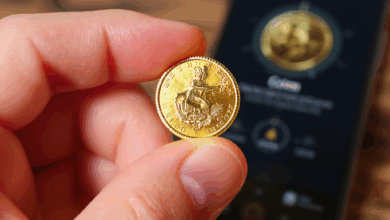Master Crypto Personal Finance Management in 3 Simple Steps

Have you ever wondered whether managing your personal finances with cryptocurrency is something you can actually handle — or if it’s just a playground for tech experts and wealthy investors? I found myself asking this exact question not long ago, staring at a bewildering mix of wallet apps, price charts, and headlines about blockchain innovations. Could someone like me really make sense of this fast-changing world and use crypto to improve financial wellbeing?
It turns out, the landscape of crypto personal finance management is evolving rapidly, offering tools and strategies that are surprisingly approachable. Recent developments have introduced AI-powered portfolio management platforms that don’t just analyze market trends but also help automate decisions, so you’re not stuck guessing when to buy or sell. Meanwhile, biometric security features like fingerprint and facial recognition are making it easier to protect your assets without fumbling with complicated passwords.
But here’s where it gets interesting: this isn’t just about technology. It’s about reshaping how we think of money and control over our financial futures. As traditional institutions like BlackRock and JP Morgan embrace cryptocurrencies and regulatory frameworks become clearer, the gap between crypto as a risky novelty and crypto as a practical financial tool is narrowing. This means the opportunities for everyday investors are expanding — and with the right guidance, so is the chance to succeed.
In this guide, we’ll explore three essential steps to master crypto personal finance management. You’ll see how to start with secure setups, build a diversified portfolio, and leverage AI tools that simplify complex decisions. Along the way, I’ll share insights from users who transformed their finances and highlight pitfalls to avoid. The goal isn’t just to inform but to empower you to take confident, actionable steps in this exciting new domain.
So, if you’ve ever felt overwhelmed by crypto jargon or uncertain about where to begin, this is your invitation to join the conversation and discover a practical path forward. Shall we start unraveling the mysteries together?
Starting with a Secure Foundation: Your Crypto Toolkit
When I first dipped my toes into crypto personal finance management, the sheer number of wallet apps and security features felt like an insurmountable maze. Have you ever felt that way? It’s a bit like trying to choose a safe before you even know what valuables you’re putting inside.
Today, securing your crypto assets isn’t just about complex passwords scribbled on paper. The rise of biometric security—think fingerprint scanners and facial recognition—has changed the game. I learned that wallets equipped with these features, like some apps highlighted by blockchain developers recently, offer a more intuitive but robust layer of protection. It’s fascinating how technology can personalize security, making unauthorized access significantly harder while keeping usability intact.
Of course, beyond biometrics, hardware wallets remain the gold standard for those serious about security. These physical devices store your private keys offline, guarding against hacking attempts. But even here, choosing a reputable model and understanding proper setup is crucial—something I wish I’d paid more attention to early on. Have you considered which wallet type matches your comfort level and needs?
Building a Diversified Crypto Portfolio More Than Just Bitcoin
Once you’re comfortable with safeguarding your assets, the next step is diversification. Early on, I thought holding just Bitcoin was enough—after all, it’s the flagship cryptocurrency. But as I explored deeper, I realized that balancing a portfolio with stablecoins, altcoins, and even tokens linked to decentralized finance platforms can help smooth out the rollercoaster nature of crypto markets.
Recent studies and market analyses suggest that including stablecoins—cryptos pegged to traditional currencies—can provide a cushion against volatility. Meanwhile, DeFi tokens open doors to earning yields through lending or staking, albeit with higher risks. This diversity isn’t about chasing every shiny coin but thoughtfully allocating assets based on your risk appetite and financial goals.
Interestingly, multi-chain wallets now allow management of these varied assets in one place, simplifying what used to be a juggling act between multiple apps. It’s like having a universal remote for your crypto universe.
Leveraging AI-Powered Tools Your Digital Financial Assistant
What truly surprised me was how AI has entered the crypto management arena. Platforms like Coinrule and 3Commas are not just buzzwords—they offer automation that can execute trades based on preset rules, monitor market trends, and even rebalance portfolios automatically.
Imagine setting your investment parameters and letting an AI assistant handle the minutiae—that’s a huge relief from the emotional and time-consuming aspects of trading. Of course, trusting a machine with your money requires some leap of faith and ongoing learning. I found that starting with small, controlled experiments helped me build confidence and understand how these tools react under different market conditions.
Additionally, AI is making decentralized applications smarter, tailoring budgeting advice and forecasting expenses with personalized data analysis. This kind of integration could redefine personal finance management beyond traditional borders.
Navigating Regulatory Waters and Staying Informed
Crypto’s evolving legal landscape can feel like shifting sands. I recall the anxiety of trying to keep up with regulations that affect taxation and compliance. But staying informed is more accessible than ever, with many platforms now providing updates and guidance to help investors stay compliant.
It’s worth asking—how do you currently keep track of these changes? Engaging with communities, subscribing to reliable news sources, and consulting professionals when necessary can make this daunting task manageable.
The Journey Forward: What Could This Mean for Us?
As I piece together these elements—security, diversification, AI tools, and regulatory awareness—I realize that managing crypto personal finance is less about mastering every technical detail and more about cultivating a thoughtful approach to a new financial reality.
But I’m left wondering: with all these advancements, are we truly ready to entrust significant portions of our financial futures to digital assets and AI-driven platforms? What risks might we be overlooking in the excitement of innovation?
Perhaps this isn’t a question with a clear answer but an invitation for us to keep exploring, questioning, and adapting together. How do you envision your role in this evolving landscape? Could embracing these tools reshape not only our wallets but also our understanding of value and trust?
Let’s continue this conversation — after all, every journey begins with a single step, or in this case, a single click into the crypto world.

Looking back at our exploration of crypto personal finance management, it’s clear that the journey is less about mastering an overwhelming technical maze and more about embracing a thoughtful, adaptable approach. Starting with securing your crypto assets using modern tools like biometric wallets, then diversifying beyond just Bitcoin, and finally leveraging AI-powered platforms to simplify decision-making—these steps together form a practical roadmap accessible even to beginners. Yet, beyond the mechanics lies a deeper challenge: reshaping how we view money, trust, and control in an increasingly digital world.
What resonates most is that this isn’t a one-size-fits-all formula but a personal process, inviting each of us to engage actively and cautiously. The value you gain here isn’t just in setting up wallets or portfolios, but in building confidence to navigate an evolving landscape where technology and finance intersect.
So, what can you do right now? Begin by choosing a secure wallet that fits your comfort level, experiment with small, diversified crypto holdings, and explore AI tools that offer automation without overwhelming complexity. Stay curious, stay informed about regulatory shifts, and connect with communities that share your questions and experiences.
Looking ahead, as traditional finance giants and regulators increasingly integrate cryptocurrencies, the divide between crypto as a speculative novelty and a practical financial instrument will continue to shrink. This evolution hints at a future where managing crypto finances could become as routine as online banking is today. But with that comes the need for ongoing vigilance and adaptability—qualities we all must cultivate.
Here’s the thought I want to leave you with: are we ready to redefine our relationship with money in this new digital era? How will your choices today shape your financial future tomorrow? If this sparked your curiosity, why not take the first step and try a secure wallet or a simple AI tool? After all, every significant change begins with a single action. What do you think your first move will be?





